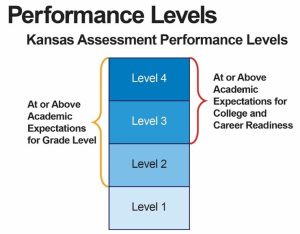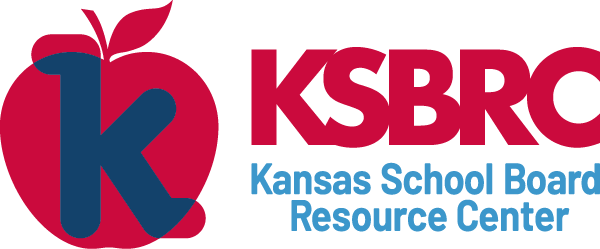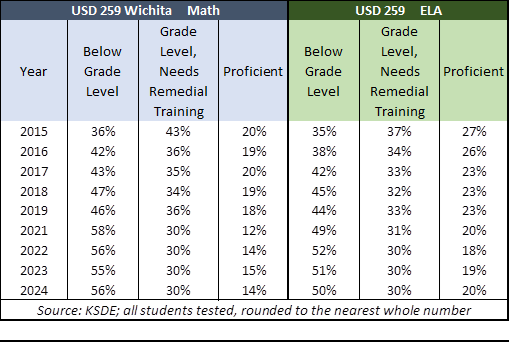Which of the following provides a clear understanding of student achievement in Kansas: 33% of Kansas students are below grade level in math, or 33% of students have Identified Needs?
Obviously, ‘below grade level’ has more meaning, so why would the Kansas Department of Education (KSDE) not use performance level descriptors that are easy to understand? The answer is that KSDE does not want parents to know that one in three students are below grade level because the public would demand change, and the adults in charge of public education resist change.
They want kids to do better, but not if it means the adults must change their behavior.
KSDE recently disclosed new performance level descriptors for the State Board of Education to approve, which seem designed to conceal complete comprehension of outcomes: Exceeds Expectations, Meets Expectations, Working Toward Expectations, and Identified Need.

Nothing else has been disclosed about the proposed performance level descriptors, but several apparent issues exist with those consciously vague labels.
“Meeting Expectations” is a meaningless label. What does KSDE mean by expectations, and are they high, low, or somewhere in between?
“Working Towards Expectations” is something less than Meeting Expectations, but to what degree? To put this in report card terms, is 70 to 80 a “C,” or is the range from 50 to 80?
“Identified Need” is the most damaging to improving student achievement because it deliberately obscures the achievement crisis.
Parents want to believe all students are doing well, so saying some students have identified needs doesn’t sound bad at all. If parents aren’t alarmed by a term like “Identified Need,” they are much less likely to pressure school districts for improvement – and that is precisely why it is being proposed,
A pattern of deception with performance level descriptors
When the current performance level descriptors were first introduced, Levels 2-4 were defined as being at or above grade level. There was no description for Level 1 in the adjacent graphic that KSDE shared with the Legislature in 2015, but it obviously is below grade level since everything above it is at or above grade level.

Level 2 is at grade level, but unlike the students in Levels 3 and 4, those students do not have ”the academic preparation, cognitive preparation, technical skills, employability skills and civic engagement to be successful in postsecondary education, in the attainment of an industry-recognized certification or in the workforce, without the need for remediation.” Hence, students in Level 2 are at grade level but need some degree of remediation.
KSDE subsequently told the U.S. Department of Education that students in Levels 3 and 4 are proficient, and we use that label in our reporting for brevity and clarity.
As awareness grew that many students were below grade level, KSDE scrubbed ‘grade level’ from the descriptors. Nothing else changed; KSDE simply reworded the PLDs in a pathetically weak attempt to conceal reality. KSDE now says it is inaccurate to say any students are below grade level because the state assessment only measures grade-level performance. All students are now magically at grade level in KSDE Commissioner Randy Watson’s world, but one-third have limited ability to read and do math.
In baseball terms, it’s like saying everyone is a Hall of Fame hitter, even though most of them hit below .200 (one hit for every five attempts).
Be honest about the achievement crisis and fix the problem
Here’s a novel idea. Instead of approving a new charade to hide the problem, the State School Board should tell Commissioner Randy Watson to present a plan to fix it with realistic, time-bound goals like going from 32% below grade level to 10% below grade level by a specific date.
The plan’s first step is already identified and waiting to be implemented: require school districts to spend their At-Risk funding on students who are academically at risk of failing as required in state law (see the 2019 and 2023 state audits) or lose accreditation.
Student outcomes won’t change until the State School Board or the Legislature compels the adults running school districts to change, and State Board members’ decisions on the proposed PLDs at the April board meeting will indicate whether this new State School Board’s focus is on defending the system or educating students.






